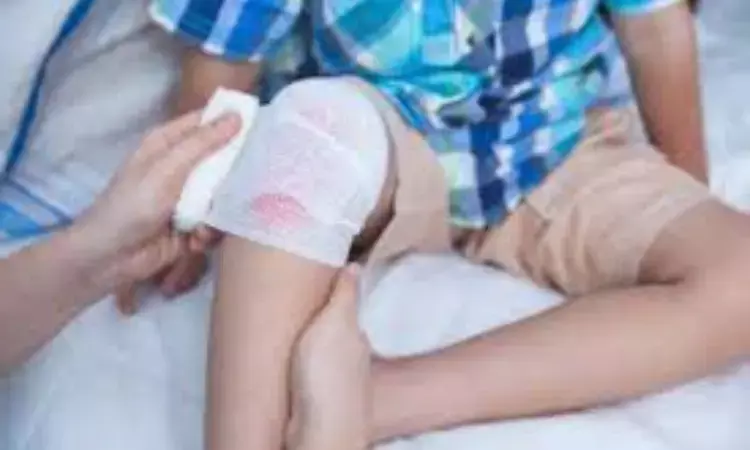- Home
- Medical news & Guidelines
- Anesthesiology
- Cardiology and CTVS
- Critical Care
- Dentistry
- Dermatology
- Diabetes and Endocrinology
- ENT
- Gastroenterology
- Medicine
- Nephrology
- Neurology
- Obstretics-Gynaecology
- Oncology
- Ophthalmology
- Orthopaedics
- Pediatrics-Neonatology
- Psychiatry
- Pulmonology
- Radiology
- Surgery
- Urology
- Laboratory Medicine
- Diet
- Nursing
- Paramedical
- Physiotherapy
- Health news
- Fact Check
- Bone Health Fact Check
- Brain Health Fact Check
- Cancer Related Fact Check
- Child Care Fact Check
- Dental and oral health fact check
- Diabetes and metabolic health fact check
- Diet and Nutrition Fact Check
- Eye and ENT Care Fact Check
- Fitness fact check
- Gut health fact check
- Heart health fact check
- Kidney health fact check
- Medical education fact check
- Men's health fact check
- Respiratory fact check
- Skin and hair care fact check
- Vaccine and Immunization fact check
- Women's health fact check
- AYUSH
- State News
- Andaman and Nicobar Islands
- Andhra Pradesh
- Arunachal Pradesh
- Assam
- Bihar
- Chandigarh
- Chattisgarh
- Dadra and Nagar Haveli
- Daman and Diu
- Delhi
- Goa
- Gujarat
- Haryana
- Himachal Pradesh
- Jammu & Kashmir
- Jharkhand
- Karnataka
- Kerala
- Ladakh
- Lakshadweep
- Madhya Pradesh
- Maharashtra
- Manipur
- Meghalaya
- Mizoram
- Nagaland
- Odisha
- Puducherry
- Punjab
- Rajasthan
- Sikkim
- Tamil Nadu
- Telangana
- Tripura
- Uttar Pradesh
- Uttrakhand
- West Bengal
- Medical Education
- Industry
Stimuli-responsive dressings can revolutionize burn treatment in children: Study

Australia: Findings from two recent studies have shown that new technology from the University of South Australia could revolutionize burns treatments in children by using stimuli-responsive dressings that safely reduce infection and stimulate healing.
The studies published in the journals Acta Biomaterialia and Biomedicines describe the antimicrobial efficacy of ultra-small silver nanoparticles against wound biofilms.
The findings are significant as burns are one of the most common injuries and are one of the leading causes of death in children under four. While there has been substantial improvement in the survival rates for burns patients treating pediatric burns remains challenging, especially with the rise of multi-drug resistant bacteria.
A research team at the UniSA's Future Industries Institute (Dr Zlatko Kopecki, Professor Allison Cowin and Professor Krasimir Vasilev) developed the advanced sliver nanoparticle hydrogel-coated dressing. The dressing delivers an 'on demand' release of ultra-small silver nanoparticles that can safely break down antibiotic-resistant bacteria and promote wound repair.
The treatment innovation lies in a delivery system that responds to changes in pH and temperature, activating only when an infection is present.
Lead researcher, UniSA's Dr Zlatko Kopecki, says the novel treatment could significantly change the clinical management of burn infections.
"Wound infection and sepsis are daily problems for children with burn injuries," Dr. Kopecki said in the university's press release.
"Silver-based wound care products can inhibit the growth of bacteria, but they can also cause toxicity when they deliver too much silver to wounds.
"Our treatment is unique in that it capitalizes on the anti-bacterial properties of silver, but avoids over-exposure, by only activating when infection in present.
"These advanced, 'on demand' silver nanoparticle dressings will regulate inflammation while promoting tissue regeneration, making this a much safer and effective treatment for children."
UniSA's Professor Vasilev says the new technology will be a gamechanger for burns management.
"Currently there are no responsive wound dressings on the market," Prof Vasilev says. "This collaborative effort will enable the utilization of smart materials to the benefit of patients and clinicians."
Research partners Dr Bernard Carney and Dr Andrew May, of the Burns Unit of the Women's and Children's Hospital (WCH), are working in partnership with UniSA to better understand pathogens present in child burns and develop targeted therapy approach.
"Every year, the WCH's Burns Unit treats around 600 children suffering from burns, with scalds making up a significant proportion of these injuries," Dr May says.
"Most commonly these incidents happen at home. Children under five are most at risk because they like to mimic adult behaviour, which means that hot drinks, taps, and saucepans are all big danger zones.
"Despite modern advances in burns surgery, infection remains a big challenge for these vulnerable children and so topical silver treatments are used widely to combat this.
"We are pleased to be collaborating with the great minds at UniSA in bringing new silver treatments to give children the greatest opportunity to recover from burns and live their best lives."
References:
1) The study titled, "Multifunctional ultrasmall AgNP hydrogel accelerates healing of S. aureus infected wounds," is published in the journal Acta Biomaterialia.
DOI: https://www.sciencedirect.com/science/article/abs/pii/S1742706121002440
2) The study titled, "Eradication of Mature Bacterial Biofilms with Concurrent Improvement in Chronic Wound Healing Using Silver Nanoparticle Hydrogel Treatment," is published in the journal Biomedicines.
DOI: https://www.mdpi.com/2227-9059/9/9/1182
Dr Kamal Kant Kohli-MBBS, DTCD- a chest specialist with more than 30 years of practice and a flair for writing clinical articles, Dr Kamal Kant Kohli joined Medical Dialogues as a Chief Editor of Medical News. Besides writing articles, as an editor, he proofreads and verifies all the medical content published on Medical Dialogues including those coming from journals, studies,medical conferences,guidelines etc. Email: drkohli@medicaldialogues.in. Contact no. 011-43720751


